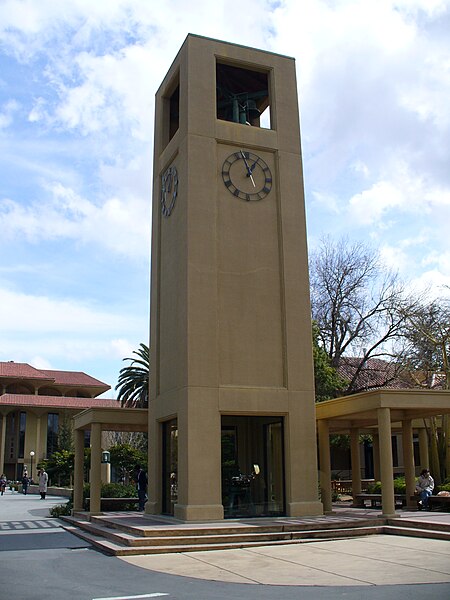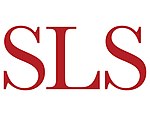Stanford Clock Tower

The Stanford Clock Tower with its attached, colonnaded pergola is located at the so-called “Circle of Death” at the corner of Escondido and Lasuen Malls on the campus of Stanford University. It was built in 1983 by a donation from trustee William Kimball.It holds the mechanical clock, built in 1901 by the Seth Thomas Clock Company, which was originally housed in Stanford Memorial Church’s large belfry. When the belfry collapsed in the 1906 earthquake, the university preserved the chimes in temporary structures near the church, where they continued to chime the hours. (During the 1950s and 1960s the chimes were heard to strike 13 times at noon, possibly the result of a student prank.) In 1983 the clock and chimes were rehoused in the current clock tower. The clock mechanism still needs to be hand-cranked twice a week. In 1997 a new temperature-compensating pendulum designed by engineering students was installed to eliminate errors in time-keeping caused by temperature changes.On May 10, 1983, when then-Stanford president Donald Kennedy unveiled the new clock tower, he burst out laughing: the clock's west face had been covered with Mickey Mouse's face and hands by an unknown prankster.
Excerpt from the Wikipedia article Stanford Clock Tower (License: CC BY-SA 3.0, Authors, Images).Stanford Clock Tower
Panama Mall,
Geographical coordinates (GPS) Address Nearby Places Show on map
Geographical coordinates (GPS)
| Latitude | Longitude |
|---|---|
| N 37.42595 ° | E -122.168858 ° |
Address
Stanford University
Panama Mall 408
94305
California, United States
Open on Google Maps






